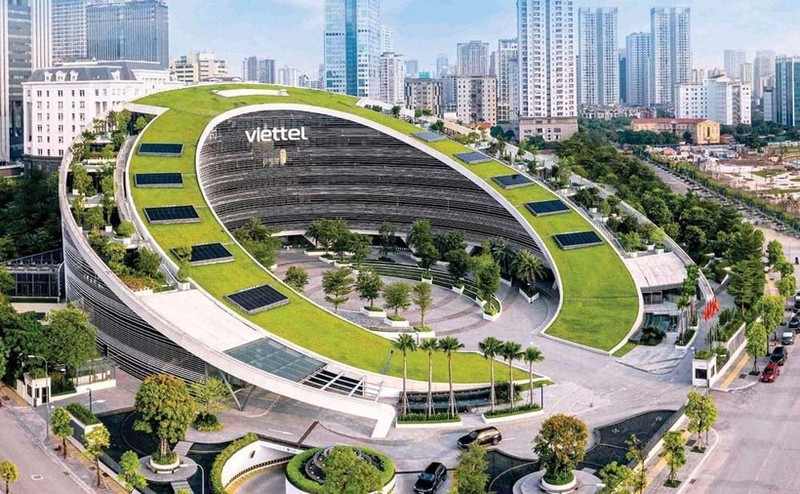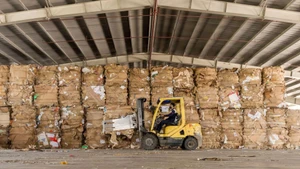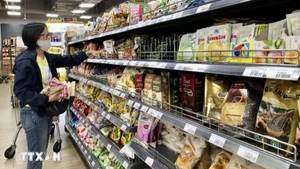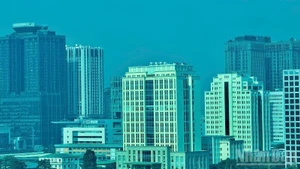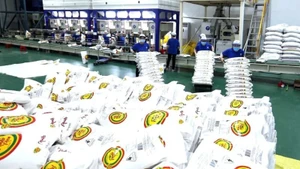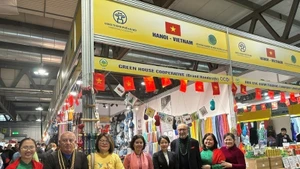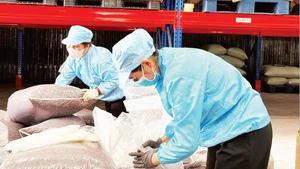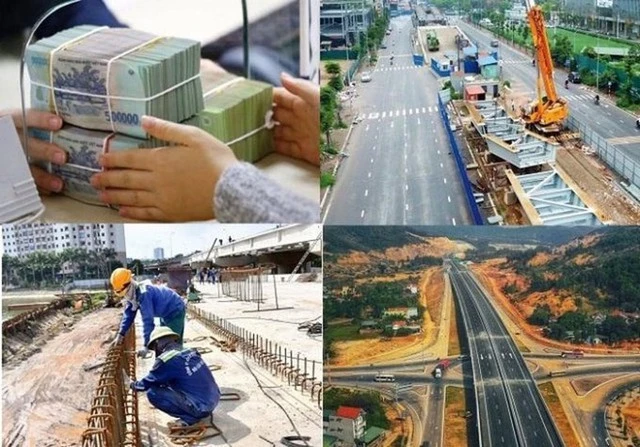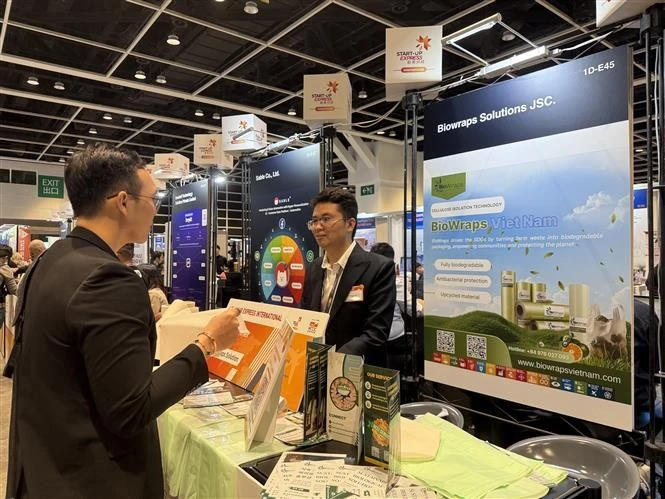Barriers to the development of environmentally friendly materials
In Viet Nam’s construction market today, many types of eco-friendly materials have emerged, such as non-fired bricks, ecological paints, recycled concrete, thermal insulation panels, and energy-saving roofing. These products have been certified as meeting green standards.
The benefits of green building materials—such as reducing carbon emissions, saving energy, improving living spaces, and extending the lifespan of buildings—are undeniable.
However, construction experts acknowledge that most of these products remain out of reach for the majority of low- and middle-income people, who account for the largest share of housing demand. The high prices of green materials stem from small-scale production, imported technologies, and a lack of tax incentives. For instance, when importing glass powder and recycled plastic granules from abroad, high transport costs, as well as certification and inspection expenses, further inflate prices. As a result, green materials struggle to compete with traditional ones without tax, credit, or research and development support from the State and international organisations.
Another barrier lies in the lack of synchronisation across the supply chain and among contractors. “Many traditional builders are unfamiliar with non-fired bricks or prefabricated materials, leading to delays and cost increases. Without training programmes and technical guidance, green building materials will find it difficult to gain a foothold in housing construction,” shared the director of an investment and construction company in Ha Noi.
Pham Duc Nhuan, from the Southern Sub-Institute of Building Materials under the Viet Nam Institute for Building Materials, Ministry of Construction, stated that high initial investment costs are one of four major challenges to the adoption of green materials. These products usually entail higher production costs compared with traditional materials, particularly in the early application stage. This creates difficulties for contractors and consumers in accessing and using them. In addition, although Viet Nam is gradually developing standards for green materials, there remains a lack of specific regulations on assessment and quality management, creating difficulties in implementation and widespread adoption.
Moreover, according to Nhuan, many investors, contractors, and consumers still lack full awareness of the long-term benefits of green materials, such as reducing energy consumption, improving indoor air quality, and minimising environmental impacts. The limited domestic supply of green materials, leading to reliance on imports, also contributes to higher costs and longer construction times.
Criteria framework and long-term strategy
According to Nhuan, Viet Nam’s growing demand for construction materials presents a major challenge in resource management and emissions. The country’s cement industry alone produces around 100 million tonnes annually, accounting for about 10% of national CO2 emissions. Meanwhile, tens of millions of tonnes of reusable waste such as fly ash, steel slag, and red mud are generated each year, yet the recycling rate remains low. Therefore, the use of green materials in construction is no longer a voluntary option but has become an inevitable trend for the global construction industry. It is also a key factor in promoting sustainable development, meeting international environmental standards, and fulfilling Viet Nam’s emission reduction commitments.
Currently, Viet Nam is implementing multiple policies that create opportunities for businesses and investors in the green construction materials sector. These include the Viet Nam Green Materials Development Strategy to 2030 with a vision to 2050; the national master plan, green growth strategy, and circular economy model; as well as the Environmental Protection Law 2020, which stipulates the reuse of solid waste in construction.
Nevertheless, experts stress that to develop green buildings and green materials, in addition to enterprises investing in modern technology, it is also crucial to raise market awareness and complete the legal framework. For example, under Decree 08/2022/ND-CP, the Government assigned the Ministry of Natural Resources and Environment (now the Ministry of Agriculture and Environment) to set out criteria and certification for the Viet Nam Eco-label for environmentally friendly products and services; and to provide guidance and supervision for organisations and individuals with certified products. However, to date, the Ministry has not yet issued a set of criteria for green building materials.
Proposing solutions, Le Van Ke, Deputy Director of the Department of Science, Technology, Environment and Building Materials (Ministry of Construction), suggested that the Ministry of Agriculture and Environment should coordinate with specialised ministries to set eco-label criteria and certification for each product under their management. These agencies would then integrate green material development into standards, programmes, and sectoral development plans.
Regarding the establishment of green criteria, the Ministry of Construction has also proposed, and received approval, to include provisions on labelling construction materials in the draft Law amending and supplementing certain articles of the Law on Economical and Efficient Use of Energy.
Many experts recommend that Viet Nam should encourage greater private investment through financial incentives. For example, strengthening international cooperation with the World Bank, the Asian Development Bank, and the United Nations Human Settlements Programme (UN-Habitat) to access funding and technology. In addition, the State should soon implement mechanisms to support interest subsidies for housing projects using green materials, while also considering subsidies through environmental funds or public-private partnerships in sustainable construction. For instance, households building social housing or homes under 70 square metres using more than 50% eco-friendly materials could be exempted or granted reductions in construction taxes, or receive subsidies for material costs.
A long-term strategy should aim to standardise green construction materials by integrating them into national technical regulations. More innovative policies are needed, such as mandating a proportion of recycled materials in state-funded projects (roads, bridges, schools, hospitals), and applying green design thinking from the outset—meaning energy-saving, recyclable, and eco-friendly materials should be factored into blueprints in line with the budget of each target group. At the same time, communication campaigns should be intensified to raise public awareness of the health benefits and lower operating costs that green building materials can deliver.
